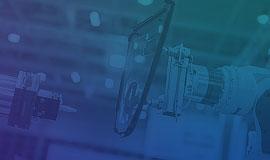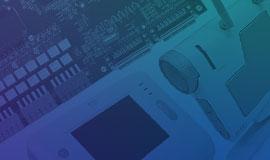By Nuvation | Jul 11, 2013
“Our electronics design is done, now how do we get this thing into manufacturing quickly?” If you’ve ever asked yourself this question, you’re not alone. Most companies nowadays are focused on selling a product, not making it, particularly if they introduce products only once every 12 or 18 months.
Often companies think that once the product is designed and prototyped (5-10 units), all that remains is a ramp up in volume to production. To ramp up production, however, an electronic manufacturing services provider (EMS, or Contract Manufacturer), needs to “build to print”. In general, EMS providers don’t want to develop your product, they want to follow instructions and build it as efficiently as possible.
Here are 3 common pitfalls involved with the post-design to production phase in an electronic product’s lifecycle that you should be aware of. Knowledge of these issues can help you get your product on the shelves in time to meet your goals.
1) Poor Manufacturing Planning
Before you think about ramping up from prototypes to production, you need to make sure you have the material for production and a plan. Once the Hardware Design Document for your prototype design is completed (early in the design cycle), you will have a good idea of the major electrical and mechanical components required. It’s at this point that you need someone to start checking lead times, looking for component obsolescence and availability issues, and dealing with fulfillment source and minimum order quantities with the supply chain best suited for your product.
Partner alignment with component makers may be required to get access to inventory and technical support of the latest-and-greatest electronic components. Top electronic design service providers can select best suppliers for you (based on production volumes, technology and geography), and manage those introductions. This is the fastest and most efficient way to setup your component supply chain, and can eliminate lengthy unforeseen delays.
2) Insufficient Testing
What options need to be considered for production to begin? Things like prototype DFM analysis, printed circuit board (PCB) assembly testing (flying probe or in-circuit), assembly in-process quality steps (AOI, 5DX X-Ray), environmental stress screening (burn-in), certification requirements (UL, CE, FCC, ISO), and accelerated life testing feedback e.g. HALT) all need to be addressed. And this is with each PCB assembly – you may have multiple PCBAs in one system.
And what about the entire product? You may have mechanical requirements (plastics, sheet metal, castings), final assembly requirements (disk drive images, integration testing) and another entire set of functional testing that needs to be done on the final unit before shipping. This long list of complex options needs to be evaluated for use on each new product. Failure to do so can lead to field failures and unhappy customers.
3) IP Ownership Issues
Since electronic products can be very complex, their design to manufacturing evolution can present a myriad of details to be worked out. The main thing for prototype designers to demand in this process is that they are transferred all the intellectual property rights at the end of the design cycle. This includes both hardware and software property rights.
Some EMS providers have branched out to the Original Design Manufacturing (ODM) model. They create a reference design, which is close to what you want for your product, and they entice you with a low up-front cost to make your product out of their reference design. Often the contracts are set up so that the ODM still owns part of the IP. This means the designer is held hostage to the ODM for both manufacturing locations and cost control (or lack thereof). Make sure any contract for design and/or manufacturing transfers all the IP to you.
If the cost of not getting your product to market quickly is high, then you really need to get it right the first time. This goes for both the design and the transition to manufacturing. Choosing an outside design firm that has extensive experience in the transition to manufacturing can reduce schedule risk, overall cost risk, and boost your chances of getting your product to the shelves.



